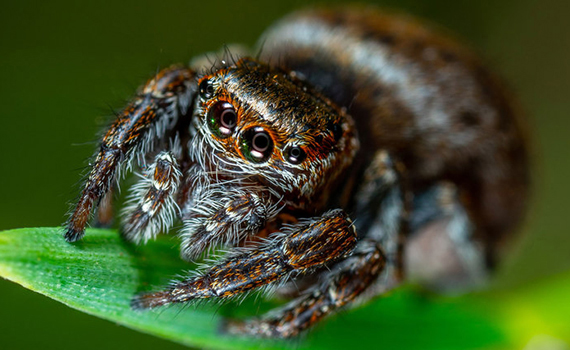NEWS
Based on spider's vision, an ultracompact 3D camera is created

The ability to see a three-dimensional image is becoming increasingly important for the developed robots and gadgets. But such cameras are still too bulky, which is why they can not be used in most devices. Scientists have developed and introduced a new approach to creating 3D cameras based on spider vision.
Horse spiders do not have much head space for complex visual organs with light projection. However, they are effective predators, thanks in large part to their eyes.
Spider eyes are sensitive to image depth. Their outer mesh layer has many planes in which the image receives a different degree of blur, depending on the distance to the subject. The spots of light from different planes are compared, which gives the spider an accurate idea of the distance to the object - an effective result with a minimum of “hardware”.
Researchers at Harvard have created a high-tech lens system that uses a similar approach - it allows you to take three-dimensional images without the use of traditional optical elements.
"Metalware", created by professor of electrical engineering Federico Capasso and his team, get two similar images with varying degrees of blur, as is the case in the eye of a spider. Pictures are compared using a special algorithm, which was also borrowed from a spider due to its speed and efficiency. The result is an excellent real-time image depth calculation.
The whole process is available for processing on equipment with small computing capabilities and low power consumption. That is, the new 3D camera can be incredibly compact - the experimental sample has a width of only 3 mm.
This means that you can use "spider" cameras not only in autonomous cars, industrial robots, but also in absolutely any gadgets, including smartphones. And this is just the beginning.



